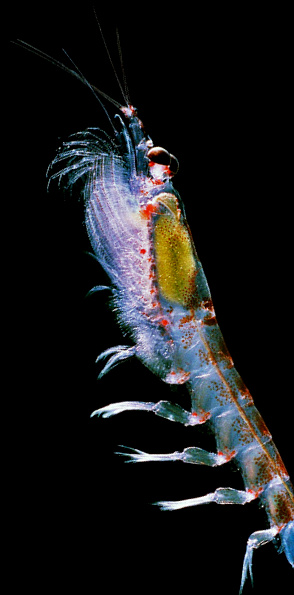Krill found to feed on plastic
 New research shows krill can turn microplastics into nanoplastics.
New research shows krill can turn microplastics into nanoplastics.
Australian researchers have found the Antarctic krill, Euphausia superba, can break down 31.5 micron polyethylene balls into fragments less than one micron in diameter.
The study was conducted in laboratory conditions with new plastics, but its authors say this is probably even easier with microplastics in the ocean, as they are usually degraded by UV radiation.
The plastics were found to have left the krills’ systems after five days, suggesting microplastics eaten by krill probably do not accumulate in animals higher on the food chain, such as whales.
The krill were found to reduce plastics pieces in size by about 78 per cent, and up to 94 per cent in some cases.
Lead researcher Dr Amanda Dawson says the ability of the Antarctic species to physically change ingested microplastics in a way not previously described.
“Despite a growing body of research, there are still considerable knowledge gaps regarding spatial patterns and abundance of microplastics in the marine environment,” Dr Dawson said.
“The phenomena of digestive fragmentation has never before been reported in other planktonic crustaceans despite the facts that many possess similar gastric mills and mouthparts designed for mechanical disruptions.”
Researcher Associate Professor Bengtson Nash said it is an important finding.
“This reveals a previously unidentified dynamic in the plastic pollution threat, with the implication that biological fragmentation of microplastics to nanoplastics is likely widespread within most ecosystems,” A/Prof Nash said.
“As such, evaluating the harmful effects of plastic pollution must take into consideration not only the physical effects to the individual arising from macro and microplastic ingestion, but also the potential cellular effects of nanoplastics. Similarly, a biological role in plastic fragmentation will influence life cycle assessment of plastics in the environment.”
Fibrous microplastics - such as fishing line or clothing fibres - make up a large proportion of the microplastics encountered by krill in the wild, but it is not known whether these materials can be digested in the same way.
The experts say that despite the new finding, krill are not likely to solve the problem of plastics and microplastics polluting the oceans.
“It’s not necessarily helping plastic pollution, it’s just changing it to make it easier for small animals to eat it,” Dr Dawson said.
“It could be a new source of plastics for the deep ocean.”







 Print
Print